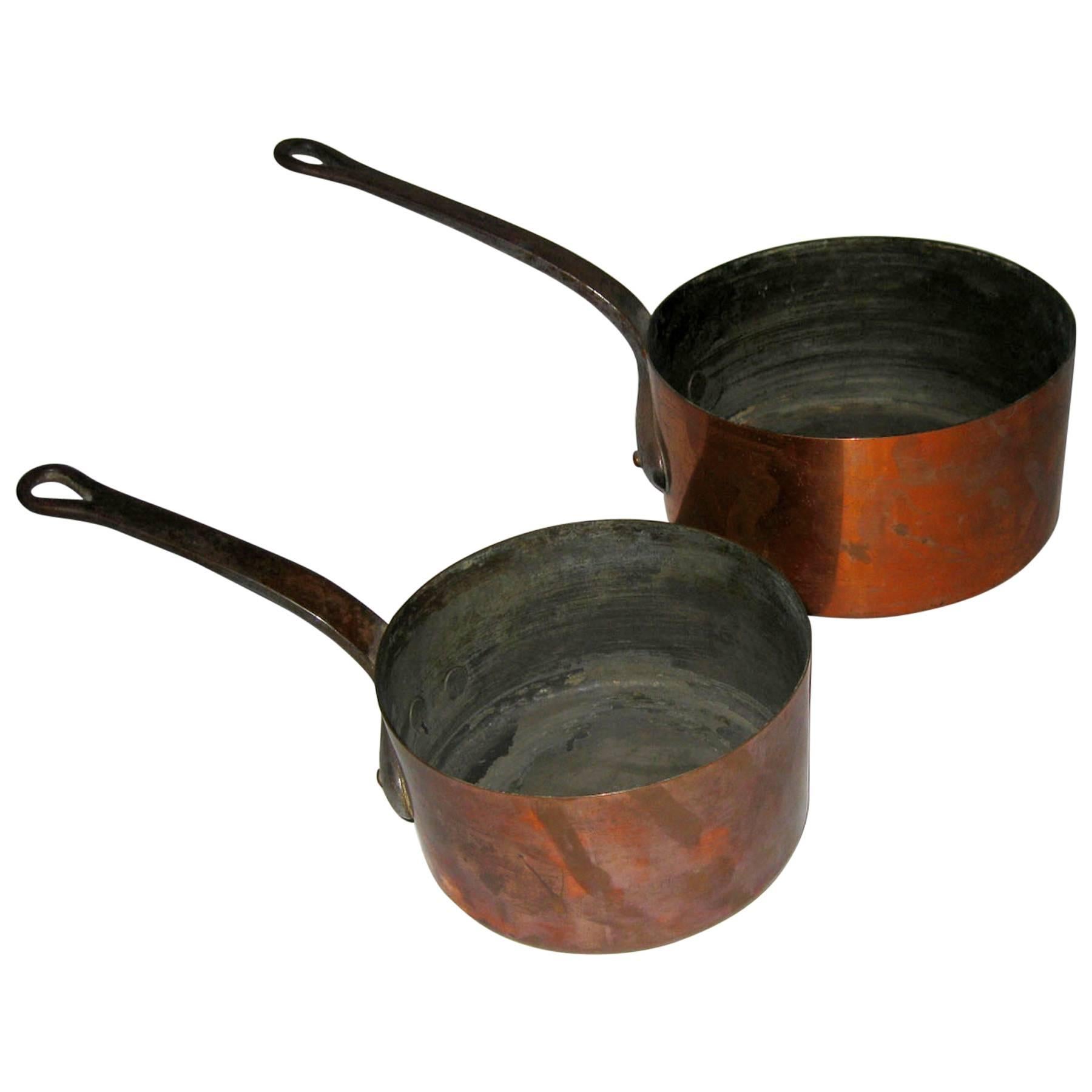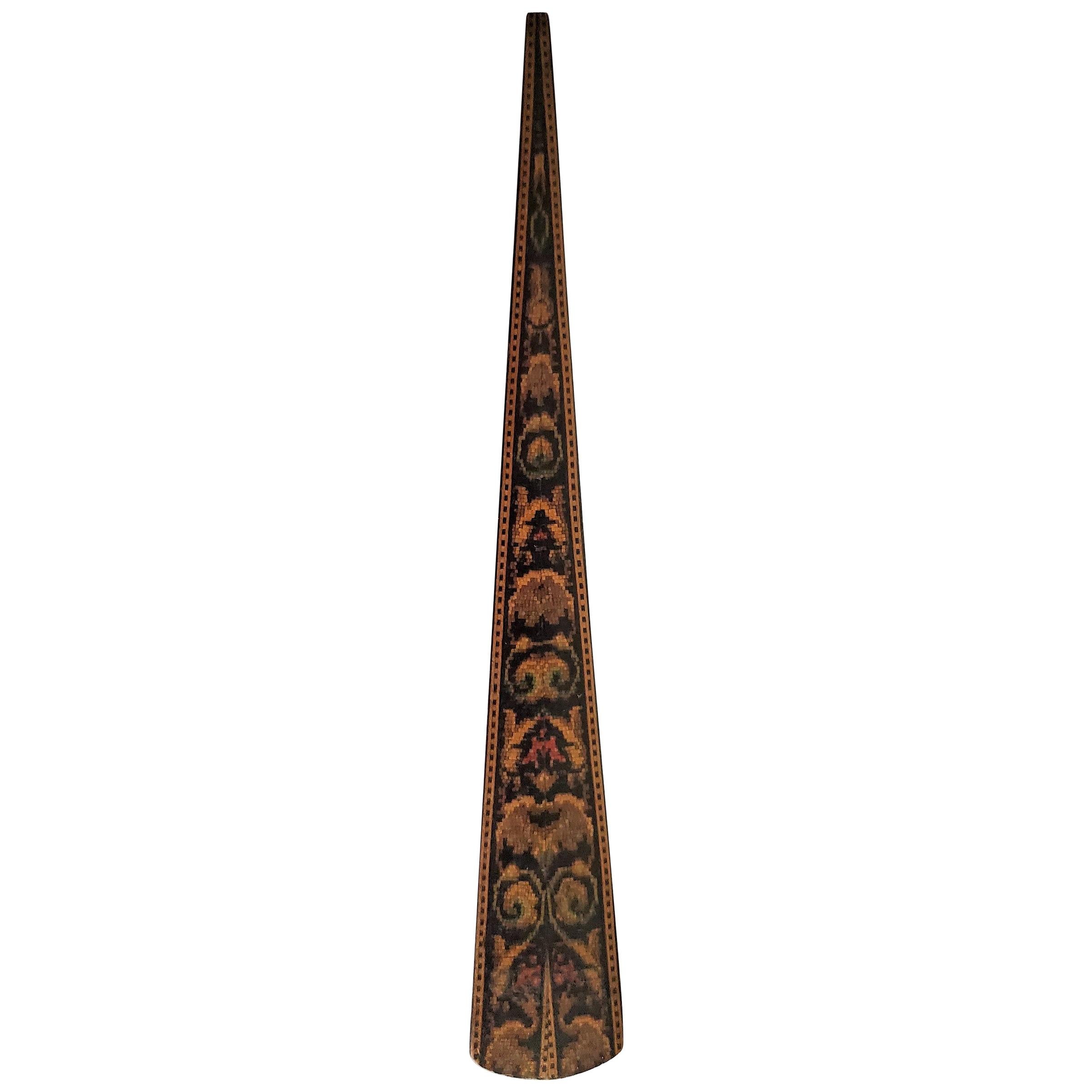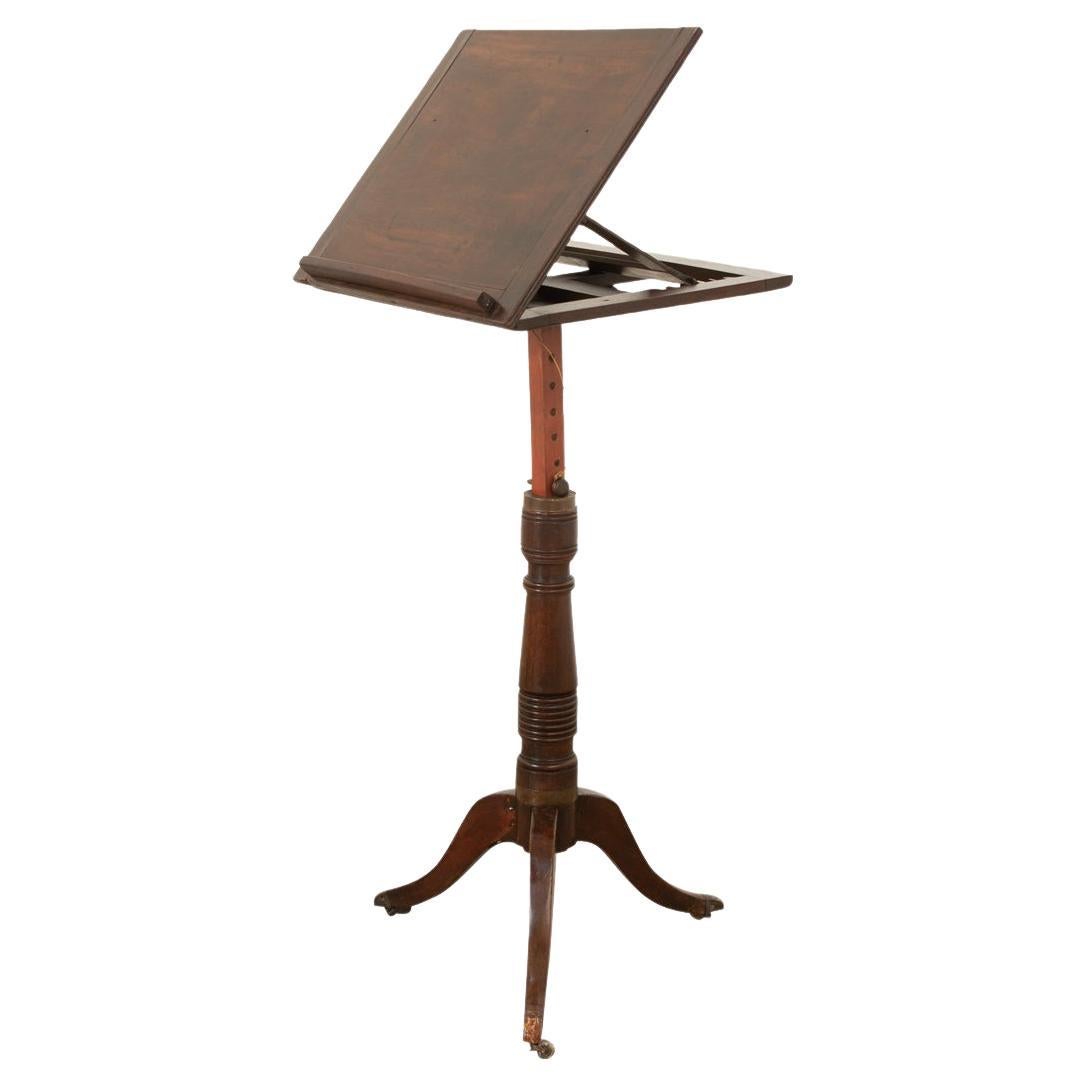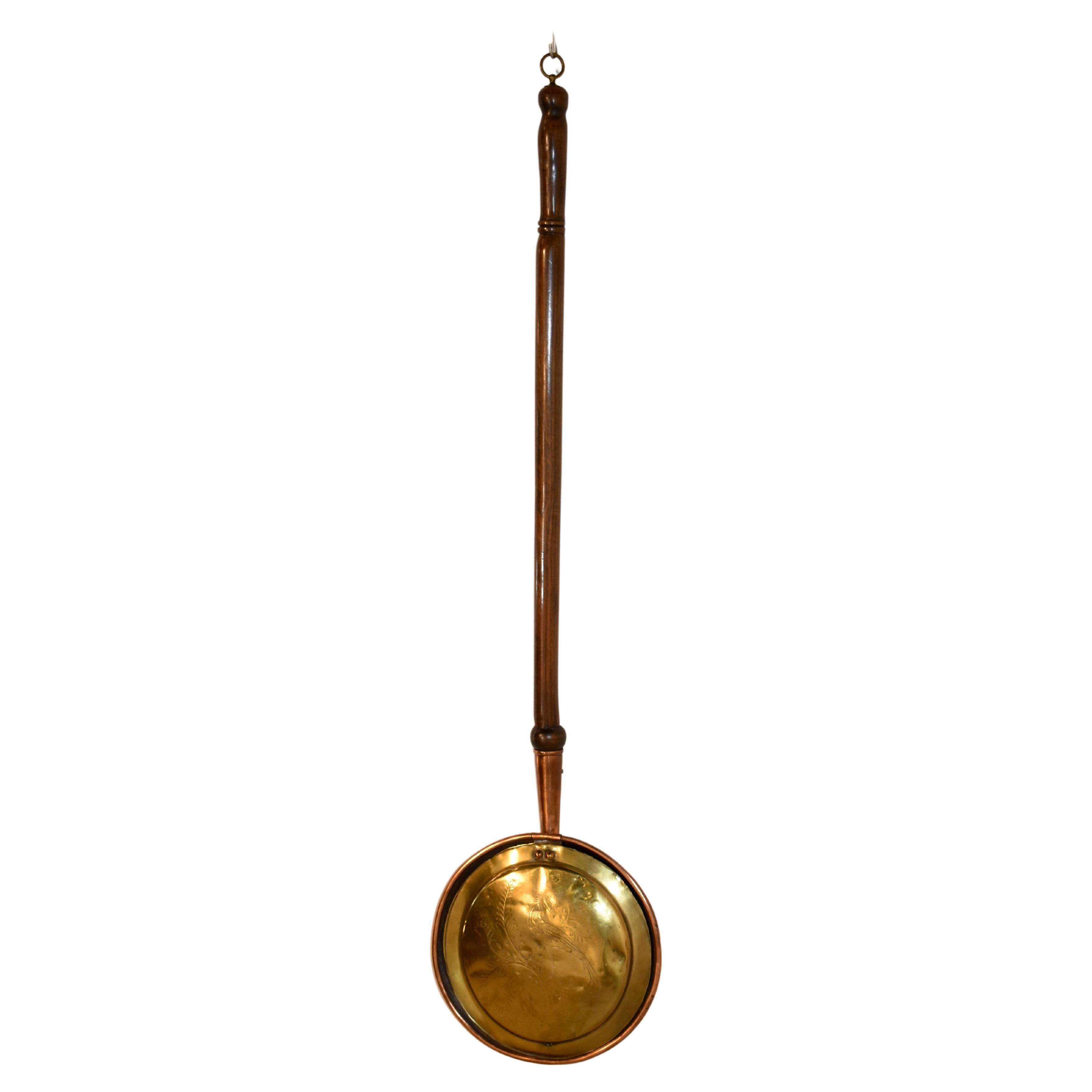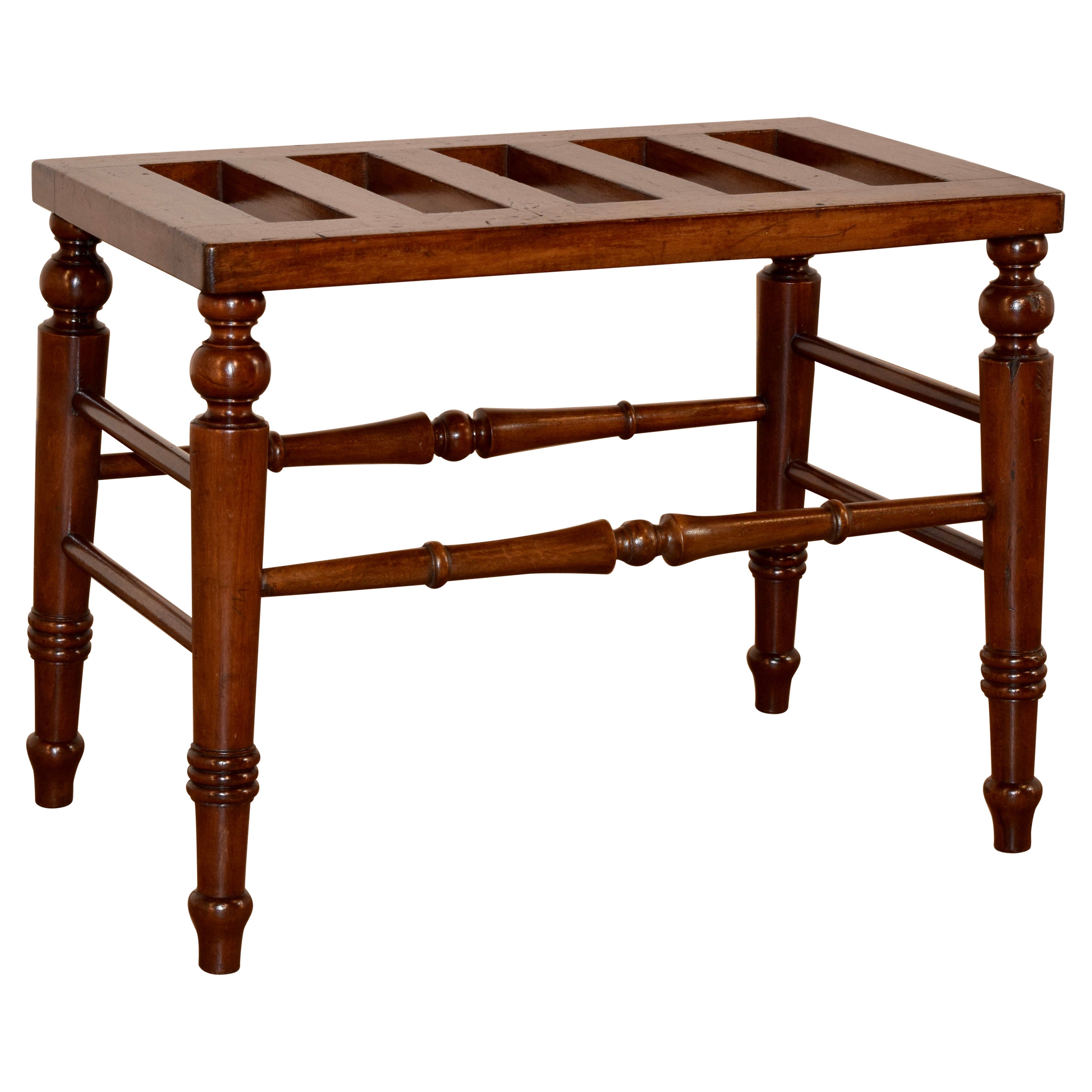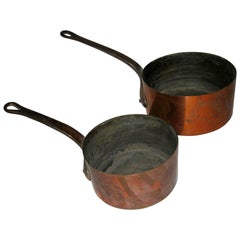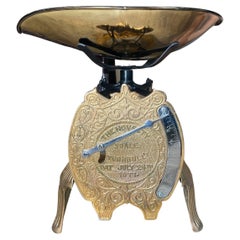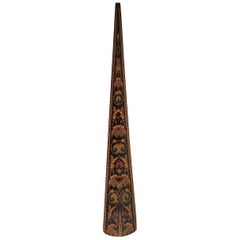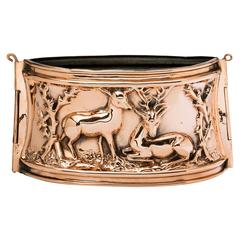
English Copper Oval Pie Mould, 19th Century, Cookware Kitchen
View Similar Items
1 of 2
English Copper Oval Pie Mould, 19th Century, Cookware Kitchen
About the Item
- Creator:Benham & Froud (Manufacturer)
- Dimensions:Height: 5 in (12.7 cm)Width: 7.5 in (19.05 cm)Depth: 5 in (12.7 cm)
- Style:High Victorian (Of the Period)
- Materials and Techniques:
- Place of Origin:
- Period:
- Date of Manufacture:1855-1924
- Condition:Wear consistent with age and use. the pins are old not original to the mould.
- Seller Location:Woodbridge, CT
- Reference Number:Seller: SGR-5041stDibs: LU185934245443
You May Also Like
- 19th century French Copper CookwareLocated in Savannah, GAPair of French copper sauce pans in graduated sizes featuring riveted metal handles with a slight tilt. Measure/ Large: 7.25 inches tall to top of handle, 4 inches tall to top of pan...Category
Antique 1860s French French Provincial More Furniture and Collectibles
MaterialsCopper
$495 / set - 19th Century Turnbull Novelty Kitchen ScaleLocated in Guaynabo, PRThis is a 19th Century Turnbulls Novelty Kitchen Scale. It depicts a gilt cast iron scale with a brass graduated ounces and pounds plate at the right side of the decorated with scrol...Category
Antique 19th Century American Victorian Models and Miniatures
MaterialsIron
- Rare 19th Century English Tunbridgeware Hair Pin or SlideLocated in Dallas, TXPresenting an absolutely gorgeous and extremely unique and rare 19th century British Tunbridgeware hair pin/bobbin or slide. This slide is unlike any of it’s kind we have seen before…. it is a very rare survivor ! From circa 1860–1880. Made of walnut with gorgeous marquetry inlay on the entirety of the front with classic Tunbridgeware micro-mosaic all over the front. The rear is walnut. The marquetry inlay appears to be various different woods, namely, maple, walnut and satinwood. Would have been worn in a Lady’s hair bun with the micro-mosaic facing forward. This would have belonged to a very elegant lady in the mid to late 19th century. Tunbridge ware is a form of decoratively inlaid woodwork, typically in the form of boxes, that is characteristic of Tonbridge and the spa town of Royal Tunbridge Wells in Kent in the 18th and 19th centuries. The decoration typically consists of a mosaic of many very small pieces of different coloured woods that form a pictorial vignette. Shaped rods and slivers of wood were first carefully glued together, then cut into many thin slices of identical pictorial veneer with a fine saw. Elaborately striped and feathered bandings for framing were pre-formed in a similar fashion. There is a collection of Tunbridge ware in the Tunbridge Wells Museum and Art Gallery in Tunbridge Wells. The famous makers of Tunbridge ware were in the Tunbridge Wells area of Kent; their most notable work was from circa 1830-1900. Early makers of Tunbridge ware, in Tunbridge Wells in the mid-18th century, were the Burrows family, and Fenner and Co. In the 19th century, around 1830, James Burrows invented a technique of creating mosaics from wooden tesserae. Henry Hollamby, apprenticed to the Burrows family, set up on his own in 1842 and became an important manufacturer of Tunbridge ware, employing about 40 people. Edmund Nye (1797–1863) and his father took over the Fenner company when William Fenner retired in 1840, after 30 years in partnership with him. Thomas Barton (1819–1903), previously apprenticed at the Wise factory, joined the Nyes in 1836, and worked as Nye’s designer; he took over the business in 1863 and continued there until his death. In Tonbridge (near to Tunbridge Wells), George Wise (1703–1779) is known to have had a business in 1746. It continued with his son Thomas, and Thomas’s nephew George (1779–1869), who took over in 1806. In its early years the company made articles such as workboxes and tea caddies with prints of popular views; later items had pictures created from mosaics. Their workshop in Tonbridge, Wise’s Tunbridge Ware Manufactory, was next to the Big Bridge over the Medway; the building was demolished in 1886 to widen the approach to the bridge. Tunbridge ware became popular with visitors to the spa town of Tunbridge Wells, who bought them as souvenirs and gifts. Articles included cribbage boards, paperweights, writing slopes, snuffboxes and glove boxes. At the Great Exhibition of 1851, Tunbridge ware by Edmund Nye, Robert Russell and Henry Hollamby was shown; Edmund Nye received a commendation from the judges for his work. He exhibited a table depicting a mosaic of a ship at sea; 110,800 tesserae were used in making the picture. The manufacturers of Tunbridge ware were cottage industries, and they were no more than nine in Tunbridge Wells and one in Tonbridge. The number declined in the 1880s; competent craftsmen were hard to find, and public tastes changed. After the death of Thomas Barton in 1903 the only surviving firm was Boyce, Brown and Kemp, which closed in 1927. Marquetry was an old technique which was continued by Nye and Barton to create images such as birds or butterflies. ‘Green Oak’ as caused by the fungus Chlorociboria aeruginascens. Stickware and half-square mosaic was invented by James Burrows in about 1830: a bunch of wooden sticks of different colours, each having triangular or diamond-shaped cross section, were tightly glued together; in the case of stickware, the resulting block was dried, then turned to form an article such as the base of a pincushion. For half-square mosaic, thin slices were taken from the composite block, and applied to a surface.[1][2][4] Tesselated mosaic, was a development by James Burrows of half-square mosaic; it was adopted by George Wise and Edmund Nye. Minute tesserae were used to form a wide variety of geometric and pictorial designs. Many sorts of wood were used for the various colours; about 40 were in regular use. Only natural colors were used; green was provided by “green oak”, produced by the action of fungus on fallen oak. Designs for articles were often taken from designs of Berlin wool work.Category
Antique Late 19th Century English High Victorian Collectible Jewelry
MaterialsSatinwood, Walnut
- 19th Century French Copper Wall Mounted Pot Lid Holder Kitchen Hanging RackLocated in Pearland, TXA fine antique 19th Century copper wall mounted pot lid holder kitchen hanging rack from Normandy, France. This charming rack is designed for hanging French "lollipop" copper pot lids...Category
Antique Late 19th Century French French Provincial Coat Racks and Stands
MaterialsBrass, Copper
- 19th Century English Hall StandLocated in High Point, NC19th century English hall stand made from oak. It is a lovely scalloped and shaped piece with five hooks for coats or hats and has a large umbrella ...Category
Antique 19th Century English Victorian Coat Racks and Stands
MaterialsOak
- English 19th Century Mahogany LecternLocated in Baton Rouge, LAA delightful 19th century Victorian English mahogany lectern hand-crafted in England circa 1860 featuring a tilt top that can be placed at different angles, a well turned and banded ...Category
Antique 19th Century English Victorian Music Stands
MaterialsWood, Mahogany
Recently Viewed
View AllMore Ways To Browse
Antique Kitchen Lamps
Antique Kettle Pot
English Copper Pots
Antique Dome Lamp
Antique Copper Antiques Art Collectables
Antique Copper Art Collectibles
Kettle English
English Victorian Lamp
Antique Copper Kettle
Antique Copper Kettle Antiques
Antique Copper Kettle Copper
Antique Copper Kettles
Copper Antique Kettle
Copper Kettle Antique Copper
Copper Kettles Antique
Copper Kettle Antique
Embossed Metal Lamp
Small Victorian Lamps
